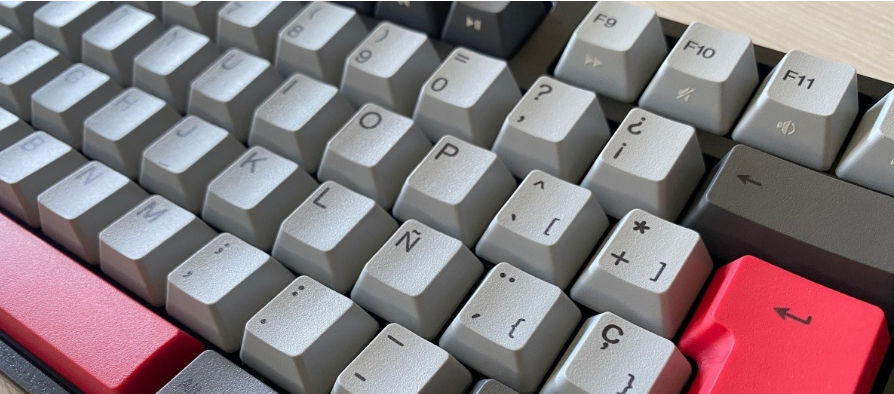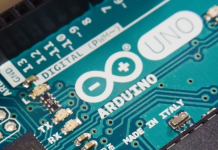
We are going to explain how to solve the problems when your keyboard is misconfigured, which could be due to a keyboard malfunction or a software glitch. The most common is the second case, since if we have more than one language configured in Windows, we may change it without realizing it, and that makes the keys not appear to be what they are, and when clicking on one, type something else.
We are going to start the article by telling you all the solutions for software problems, but then we will also tell you solutions for the most common hardware problems that you may encounter, which are not always configuration problems.
Solutions for software problems
We are going to start with the most basic solutions, those that you can resort to if your language has been misconfigured and it does not write correctly. There are several options that you can resort to, that is, you can try one by one all of them.
Alt+Shift
The quickest method to fix this problem is to press the Alt + Shift keys at the same time. It is a Windows shortcut that automatically alternates between the languages that you have configured in Windows, so if the keyboard has been set to English, you can keep pressing it until it is set to Spanish again.
Click on the language in the taskbar
Another equally fast option is to click on the language button that you have on the Windows taskbar. Just at the bottom right, between the volume icon and the clock, you will indicate the language you are using on your keyboard. If you click on it, you will be able to see which ones you have installed and alternate.
Here, if you have selected the Spanish language but, your keyboard is not typing in that language, you can try selecting another language and then selecting yours again. You know, like it’s turning off and on again.
Use the language settings
You can also try entering Windows settings, and once inside, click on the Time and Languages category. Once inside the Time and Language options, go to the left column of the screen and click on the Language section that you will have in third place. You will enter a screen where the first thing you will see are the languages that you have configured on your keyboard, in Windows or the applications.
Just below these options, you will find the list of preferred languages. The preferred language that you have in the first place is the one that you will be using, and if you click on one of them you can raise or lower them in preference to order them to your liking.
It is also possible that for some reason the keyboard layout has been misconfigured, making it in Spanish but another language. To do this, select your language in the preferred section and click on Options. When doing so, look in the Keyboards section where Spanish QWERTY should appear . If not, you will have to click Add a keyboard to add it, since it is the normal one you need to write in Spanish from Spain.
Solutions for hardware problems
But there are times when nothing has been misconfigured in terms of software, and the problem is in the hardware, either in the connection or in the keyboard itself. Here, the first step should always be to turn off and on again, either the computer or the keyboard, but if that doesn’t work you can try the following things.
Check for Bluetooth issues
If you have a wireless keyboard, it is possible that sometimes a specific error can leave it disabled, and it suddenly stops working. Here, what you have to do and it has always worked for me is to enter Windows Settings and click on the Devices category.
Once in Devices, in the left column click on Bluetooth and other devices. Here, tap on the unconfigured keyboard and hit the Remove Device button that appears when you select it. Next, reconfigure the keyboard from scratch by pressing the Add Bluetooth or other device buttons at the top.
Other physical keyboard problems
It is also possible that the keyboard has not been misconfigured but that there are just some keys that do not work. If that is the case, it is not a problem with the configuration but with the keyboard itself, and it can be caused by different things.
The best news is that the keyboard is simply dirty. Sometimes gunk can build up under the keys and affect their function. If it is a mechanical keyboard or uses some type of slot that allows you to extract the keys, the best thing to do is to remove the keys to clean them one by one by rubbing them hard. In this case, before putting them back you can also vacuum, blow with compressed air and thoroughly rub the area below the keys and where the most dirt, hair, and crumbs tend to accumulate.
And if the keyboard keys are not removable, the way to proceed would be similar to cleaning a laptop. Start by blowing on it or giving it a few puffs of compressed air, always with brief discharges and with a certain inclination, and then wipe the dampened microfiber cloth to clean the upper part of the keys. Finally, use the moistened Q-tips to also rub between the keys and on the surface until you see that you remove any dirt that may be between them.
It may also be due to having suffered a drop of fluids. In this case, it is best to let it dry to see if it will be solved when these liquids are no longer interfering. And if it is not solved, or there is simply an external break or an internal circuit break, it is best to take the keyboard to a specialized repairer.

Sharlene Meriel is an avid gamer with a knack for technology. He has been writing about the latest technologies for the past 5 years. His contribution in technology journalism has been noteworthy. He is also a day trader with interest in the Forex market.











